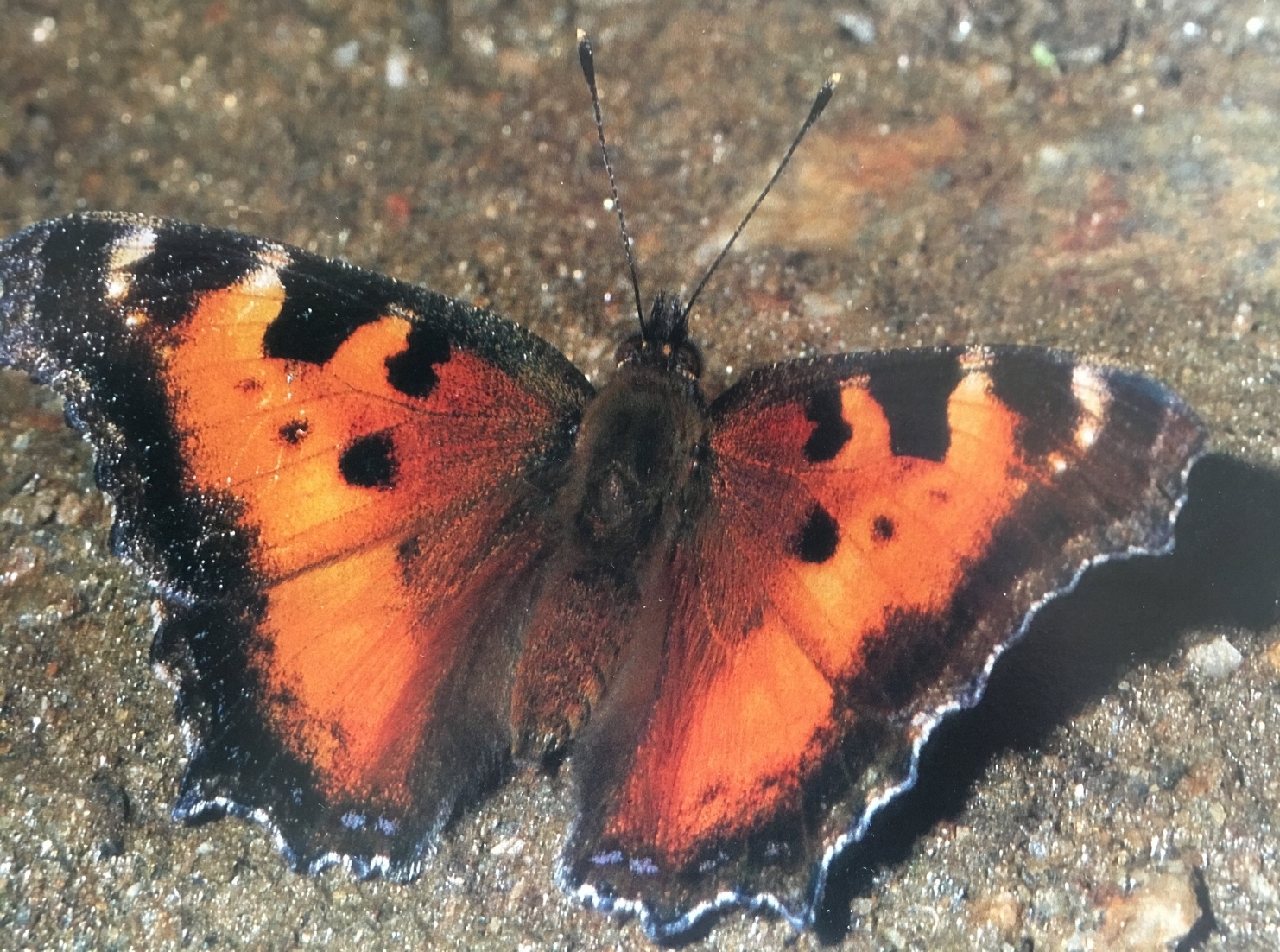Doug's Mountain Journal
A Chronicle of Natural History on San Bruno Mountain
Doug Allshouse has been writing his seasonal Mountain Journal for many years. It appears in the quarterly newsletters of the Yerba Buena Chapter of the California Native Plant Society (CNPS). We are very pleased to share his reflections on the natural history of the Mountain. Together with David Nelson, he is writing The Natural History of the San Bruno Mountains. The book will be published by Heyday Books.
I suppose this is a silly question to ask but, do you remember the first time your mother had to leave you alone to fend for yourself? My experience was the moment when my first-grade teacher told all the moms who brought their kids to our first day of school to leave the room. Instant tears and crying. I usually write about things that I see and not what I hear, but one mid-March morning I heard some high-pitched sounds that sounded like a skunk in distress.
They stopped before I could get a bearing, so I continued walking to the main picnic area. On my Colma Creek leg toward home, the sounds returned. I made a beeline in the direction of the Day Camp and, along the way, I took videos just to record the sounds. As I got closer, these high-pitched whines were intermittently interrupted by barks. Well so much for a skunk I thought, it must be a coyote pup. By the fourth video I was standing within 25 yards of the source of the sounds—a large willow surrounded by bushes next to a pod of picnic tables. Not wanting to scare the little pup, I decided to walk away and return home, and the whining and barking immediately stopped. Ah, I thought, Mom must have been hiding nearby, waiting for me to skedaddle.
California Tortoiseshell
Good Friday was a very warm day and was the source of two great phenomena. My friend, Mark Sustarich, summoned me to the summit to check out some rare San Francisco campion, Silene verecunda. Driving up Radio Road I noticed some butterflies flying east. When I got to the top the two of us were looking at some new catchfly that had broken dormancy and we were looking west at the ocean. Hundreds of blackish-orange butterflies were migrating, but unlike Painted Ladies these butterflies were occasionally gliding. It was a mass migration of California Tortoiseshell butterflies. The previous couple of days of very warm weather shook the adults off their hosts of Ceanothus (blue blossom) bushes and they were emigrating to the Sierra Nevada.
The life-cycle is interesting. Overwintering adults lay eggs and die. The larvae pupate and emerge as adults and almost immediately fly east and uphill to the Sierra Nevada. They mostly just hang out and two broods are produced. In late September the last summer butterflies scatter downslope and are the late-winter butterflies of the new year. These estivators-hibernators may live 9 or 10 months as adults and start the cycle over in late winter. Although the rhythm of the cycle is fairly constant, the numbers may vary, sometimes producing migrations in the millions of butterflies.
The second phenomenon occurred after I left Mark on the summit. I had discovered a trail below the last tower in November 2017. There were some rocky outcrops along the trail that looked like good candidates for SF campion. Mark hadn’t been down there yet, so I asked him to check it out. An hour later he texted me photos of several plants and the next day Mark, David Nelson and I counted 19 plants on the trail. Then we headed uphill to a ridge top and counted 32 more plants for a total of 51 new plants!
San Francisco campion
This was quite a find because the original sites are about 150 yards to the northwest of these plants. San Francisco has campion in the Presidio and on Mount Davidson, where it is the type species, which means it was first identified on Davidson and is the only one entitled to the moniker Silene verecunda subsp. verecunda. The only other known population is along the coast in Swanton, Santa Cruz County. We refer to our campion as S. verecunda San Bruno Mountain because the morphology of the plants in each location is noticeably different.
The spring bird migration on San Bruno Mountain has begun with Wilson’s and Orange-crowned Warbler showing up in mid-April and an Allen’s Hummingbird a few days later. The male robins are singing their hearts out, but some have already nested, and how do I know that? I’ve seen robins harassing and chasing Steller’s Jays. Swainson’s Thrush, Black-headed Grosbeak, and Western Tanagers have been spotted down the coast, so it won’t be long until they arrive here.
When I wrote my winter journal we had 9.68 inches of rain and I said that if we got about 10 more inches we would be in decent shape. Late February added a weak .28 inches, but March and April came through swimmingly and added 8.87 inches for a total of 18.83 inches ending April. The wildflowers were rejoicing, and some grasslands were bursting with dazzling displays of common owl’s clover, Johnny-tuck owl’s clover, and goldfields. The Choris’ popcorn flower was blooming along with Cleveland’s cryptantha.
California poppies and goldfields
common owl's clover (2017)
Speaking of common owl’s clover, Castilleja densiflora, we may have a subspecies or new species. Mark Eggers, who is writing the treatment of Castilleja for the Flora of North America, visited David and me and has collected some specimens, noting that the diminutive size and petal spots are unusual for the species. It seems that the ecological island known as San Bruno Mountain is famous for harboring unusual plants. Which reminds me......
...See you on the Mountain




